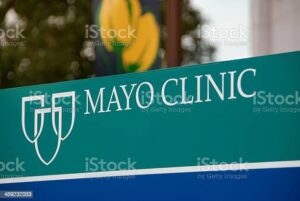The Do’s and Don’ts of Advertising Medical Services on Social Media

Introduction
Social media has become a powerful tool for marketing and advertising in the digital age. This is especially true for medical services.
Doctors and healthcare professionals can use social media to connect with patients and promote their services.
However, advertising medical services on social media comes with a unique set of challenges and ethical considerations.
In this article, we will discuss the dos and don’ts of advertising medical services on social media. I will also provide some examples of successful medical advertising campaigns.
The Dos

One of the most important dos when advertising medical services on social media is to be transparent about your credentials and qualifications.
Patients need to know they are receiving advice from a qualified and licensed medical professional.
Make sure to prominently display your qualifications and credentials on your social media profiles and website.

2. Focus on education and awareness
Another important do is to focus on education and awareness.
Social media can be a powerful tool for educating patients about various medical conditions and treatment options.
By sharing helpful and informative content, you can establish yourself as a trusted source of medical advice and build a loyal following.

3. Use visuals to engage your audience
Visual content, such as images and videos, can be highly engaging and effective in capturing your audience’s attention.
When advertising medical services on social media, make sure to include high-quality visuals that are relevant to your message.
For example, if you are promoting a new treatment, you could create a video that explains the benefits of the treatment in a visually appealing way.

When advertising medical services on social media, it is important to follow ethical guidelines and regulations set by your professional body.
Make sure to avoid making false or exaggerated claims about your services, and do not engage in unethical practices such as paying for reviews or testimonials.
The Don’ts

1.Don’t make false or exaggerated claims.
One of the biggest don’ts when advertising medical services on social media is to make false or exaggerated claims about your services.
This is not only unethical, but it can also be illegal.
Make sure to provide accurate and honest information about your services, and avoid using hyperbolic language or making promises that you cannot keep.

2.Don’t violate patient privacy
Patient privacy is a fundamental ethical principle in healthcare.
This extends to social media. Make sure to protect your patient’s privacy.
By avoiding posting identifying information about them, such as their name or medical history.
If you want to share patient stories or testimonials, make sure to get their written consent first.

2. Don’t engage in aggressive marketing tactics
Aggressive marketing tactics, such as using fear tactics or making patients feel like they need your services to be healthy.
It can be harmful and unethical.
Instead, focus on educating patients and building trust by providing helpful and informative content.

3. Don’t ignore negative feedback
Social media can be a double-edged sword.
It allows patients to leave feedback and reviews about your services.
While positive feedback can be great for building your reputation, negative feedback can be damaging if left unaddressed.
Make sure to respond to negative feedback in a professional and empathetic manner. Use it as an opportunity to improve your services.
Examples of Successful Medical Advertising Campaigns
Here are a few examples of successful medical advertising campaigns on social media:

Mayo Clinic
Mayo Clinic has a strong social media presence, with over 3 million followers on Facebook.
They use social media to share informative and educational content about various medical conditions and treatments.

Cleveland Clinic
The Cleveland Clinic is another healthcare organization that has been successful in using social media to engage with patients.
They have a popular blog and social media presence that focuses on patient education and awareness.

St. Jude Children’s Research Hospital
St. Jude has been successful in using social media to raise awareness and funds for their research.
They often use heartwarming stories of children and families affected by cancer to engage their audience and encourage donations.

Dr Mike Varshavski
Dr Mike, also known as “The Real Doctor Mike,” is a popular social media personality.
He has amassed a large following by sharing health tips and advice in a relatable and entertaining way.
He uses humour and storytelling to engage his audience and make medical information more accessible.

The dos and don’ts of advertising medical services on social media are essential to understand if you are a healthcare professional looking to promote your services.
By following ethical guidelines, focusing on education and awareness, and engaging with your audience, you can establish yourself as a trustworthy source of medical information.
You can build a loyal following. It is important to remember that social media is a powerful tool.
That should be used responsibly and with care. By avoiding false or exaggerated claims, respecting patient privacy, and responding to feedback in a professional and empathetic manner.
You can build a positive reputation and improve patient outcomes. So go ahead, and use the power of social media to connect with patients.
Also, promote your services, but always remember to do it with honesty, transparency, and a patient-centric approach.
Your patients are not just numbers, they are human beings with unique needs and concerns.
As a healthcare professional, it is your responsibility to treat them with respect and compassion, even when promoting your services on social media.
By focusing on patient education and awareness, you can help them make informed decisions about their healthcare and improve their overall well-being.
At the same time, it is important to be mindful of the challenges that come with advertising medical services on social media. The rules and regulations surrounding healthcare advertising can be complex and ever-changing, and it is essential to stay up-to-date on the latest guidelines and best practices.
Conclusion-
In conclusion, advertising medical services on social media can be a powerful tool for connecting with patients and promoting your services.
However, it is important to follow ethical guidelines and consider the unique challenges that come with promoting healthcare services.
By focusing on education, transparency, and patient privacy, you can build a loyal following and establish yourself as a trusted source of medical advice.
Remember, social media is a two-way street, so be sure to engage with your audience and respond to feedback in a professional and empathetic manner.
With the right approach, social media can be a valuable asset for promoting your medical services and improving patient outcomes.
What are your thoughts on using social media to promote medical services?